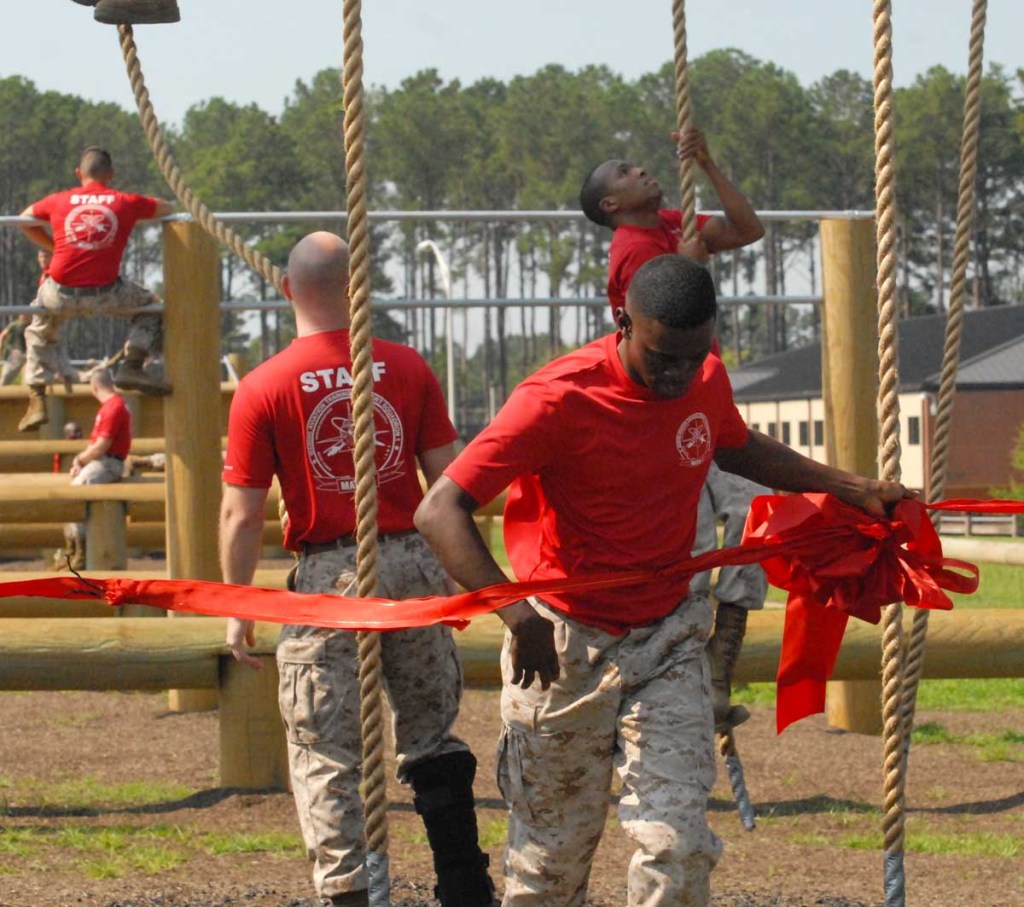NAS opens obstacle course for Marines
Published 6:00 am Friday, July 1, 2011

- US Marine Corps SSgt. Anthony Walker breaks the ribbon on the new obstacle course on board Naval Air Station Meridian Thursday. The 100-yard course will be made available to Navy and law enforcement personnel.
Watching US Marine Corps SSgt. Anthony Walker negotiate the new obstacle course now in full use on board Naval Air Station Meridian, it was clear he had done this many times before.
Trending
Jumping, pulling himself over walls and climbing a rope some 15 feet in the air, Walker and his fellow Marines seemed to enjoy having something else to maintain their physical conditioning rather than the mundane three-mile runs.
“Reminds me of boot camp,” said a sweating Walker as he completed his first run through the 100-yard course. “I love it. It gives us the opportunity to really stay in shape.”
Marine Aviation Training Support Squadron One (MATSS-1) officially opened its new obstacle course during a ribbon-cutting ceremony on Thursday. Well, it wasn’t the type of ribbon cutting that many have seen. As is the Marine way, the men and women burst through the ribbon stretched across the last obstacle like they were storming the beaches of Iwo Jima.
“This is a good day for the Marine Corps, the Navy and the law enforcement agencies who come here to train,” said Marine Maj. A. J. Brooks, commander of MATSS-1. “The Marines, especially, can maintain their combat fitness with this course.”
In 2007, Major Gerald F. Boos Jr., then commanding officer of MATSS-1, began the process to have the obstacle course built.
His goal was to incorporate a “robust physical training program to alleviate the previous occurrence of Marines running 3 miles a day, every day as their only form of physical training.”
Trending
“I just thought we needed something else … something different to maintain our fitness,” said Boos, now a civilian working on the base. “I went to Capt. Russell Knight when he was the commander here and he was all for it. So I started laying the groundwork.”
The course was designed in an effort to improve the existing physical training program at MATSS-1 through building upper body strength and confidence in the students.
The 100-yard long course includes a up-and-over bar; eight low rollover/jump over obstacles; a balance log; a set of hand-over-hand pipes; a set of log walks; a high roll over log; a log wall; a set of four log vaults; a double pull over bar; and a 20-foot rope climb.
NAS executive officer, Commander Mike Siepert, took a turn at the course himself. As a Naval aviator, he was used to doing the sorts of twisting and turning he was faced with on the course — but in a jet.
“Whew,” he said as he came down from tapping the top wooden support on the rope climb. “Tougher than it looks and it looks pretty tough. But this is a great thing for the base as Navy and the law enforcement community who train here will also be able to utilize this course.”
The course was planned and developed by the NAS Meridian Public Works and funded through the Training and Education Command in Quantico, Va.





